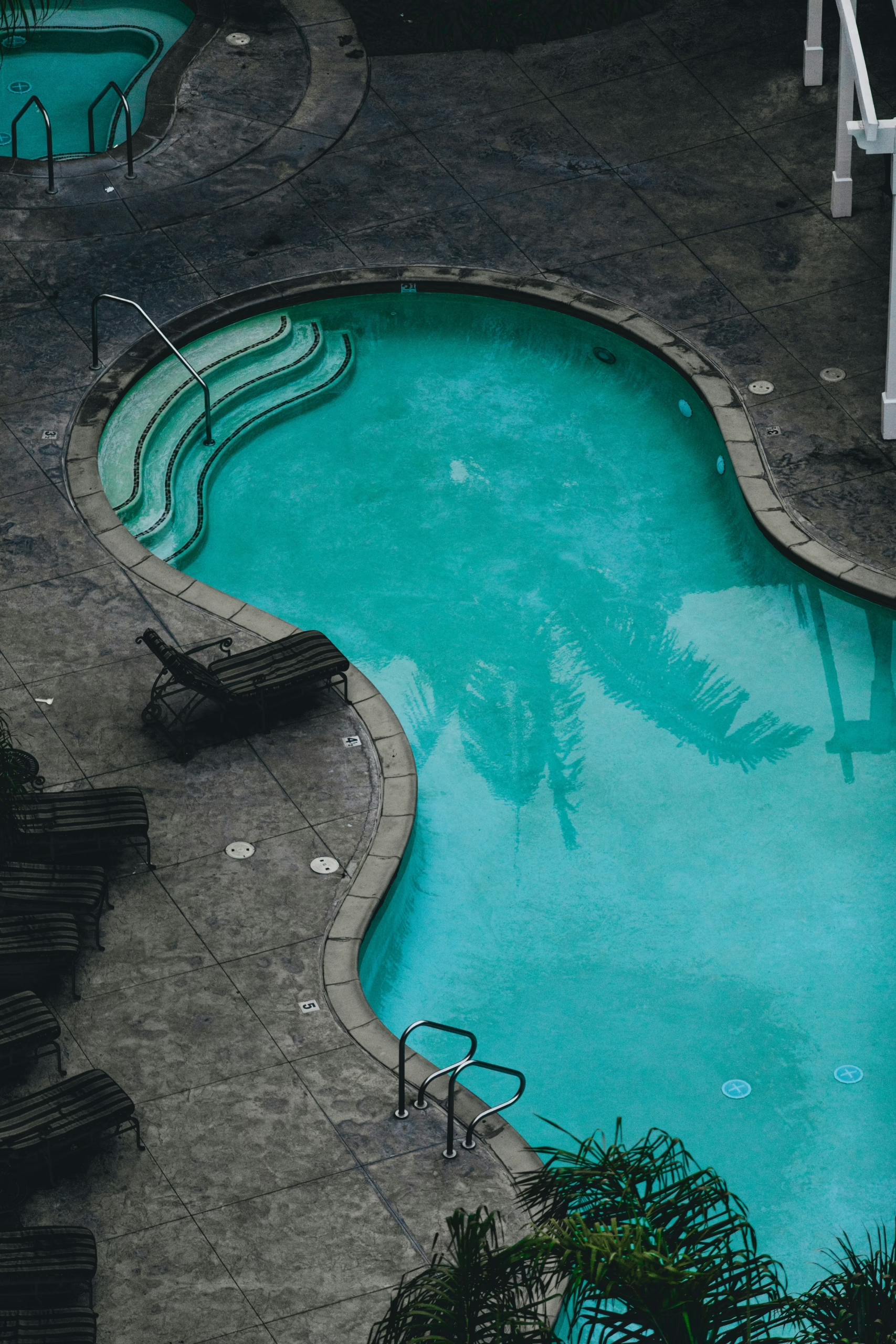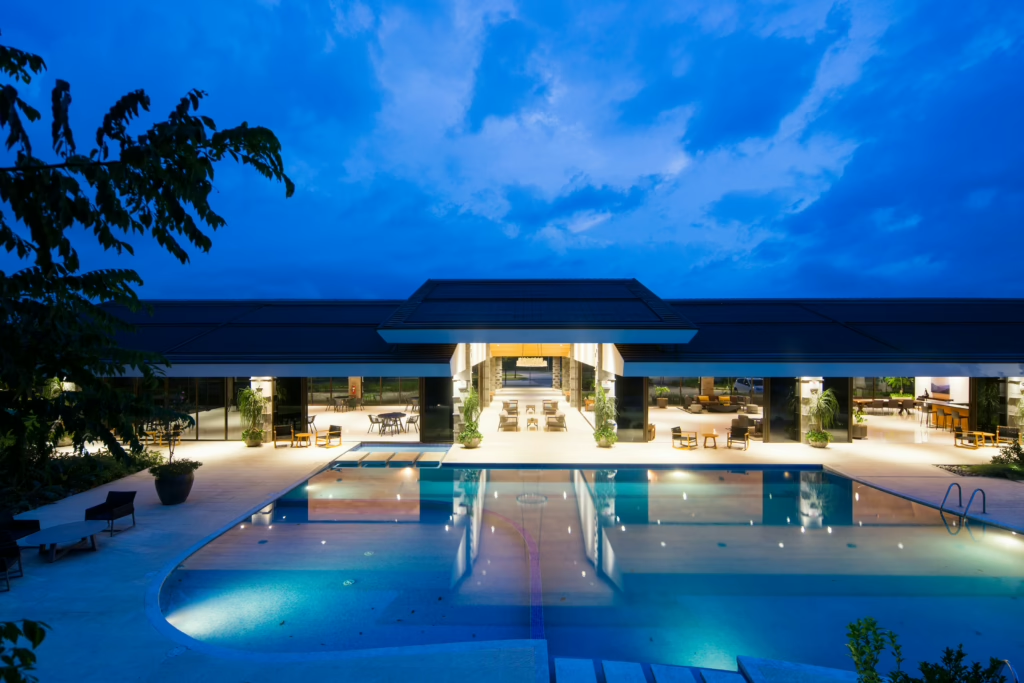A well-lit pool enhances your backyard’s ambiance and provides an essential safety feature for nighttime swimming. Unfortunately, pool lights can sometimes develop problems ranging from minor flickers to complete failures. Addressing these issues promptly protects swimmers, ensures visual appeal, and saves money on more extensive repairs in the long run.
This article offers a step-by-step troubleshooting guide, showing you how to identify typical pool light concerns and determine when professional help is needed.
Importance of Troubleshooting Pool Light Issues Promptly
Pool lights serve both functional and aesthetic purposes, improving visibility for night swimming and boosting your pool’s overall appeal. However, flickering, dimming, or total malfunction can compromise safety and detract from your outdoor experience. Delaying repair or neglecting signs of trouble can lead to electrical hazards or more serious damage to your pool’s infrastructure.
Even minor issues can escalate into major problems if left unaddressed. For example, a small water leak into the fixture may eventually corrode wiring, while a flickering light might signal a developing short circuit. Taking action early helps avoid more extensive repairs or replacements, saving time and money.
This guide provides a systematic approach to diagnosing and fixing common pool light issues. Each section walks you through best practices, from safety precautions to detailed checks on wiring, GFCI outlets, bulbs, and more. By the end of this article, you’ll understand how to safely handle basic pool light troubleshooting and recognize when it’s time to call an expert.
1. Safety First
Pool lights are connected to your home’s electrical system, making safety the most critical consideration. Water is an excellent conductor of electricity so that any mishandling can pose severe risks.
Always Turn Off the Power at the Breaker Before Inspecting
Locate the breaker or fuse controlling your pool light circuit and switch it to the “off” position. This step is non-negotiable; failing to disconnect the power can result in electric shock. For added security, label the breaker to prevent anyone from accidentally flipping it back on.
Using a Voltage Tester to Ensure No Current Is Flowing
Even with the breaker off, use a voltage tester or multimeter to verify that there is no lingering electrical current. A surprising number of accidents occur because a circuit is assumed dead when it isn’t. Confirming zero voltage at the pool light junction box or fixture adds an extra layer of protection.
Note on Environment: Be mindful of standing water around the pool deck. Dry off the area as much as possible, and wear rubber-soled shoes to reduce slip and electrical hazards.
2. Check the GFCI Outlet
A Ground Fault Circuit Interrupter (GFCI) is designed to protect against electrical shocks by immediately shutting off power when a fault is detected. Due to the moisture-rich environment, GFCI outlets are common in pool areas.
How to Reset a Tripped GFCI Outlet
- Locate the GFCI Outlet: It may be near your pool equipment or a nearby panel.
- Press the “Reset” Button: Most GFCI outlets have two buttons: “Test” and “Reset.” If the outlet has tripped, pressing “Reset” often restores power to the pool light.
- Test the Light: After resetting, try turning on the pool light to see if it’s functioning.
Why GFCI Outlets Often Trip and How to Address Recurring Trips
- Moisture Infiltration: Even small amounts of water can trigger the GFCI.
- Faulty Wiring: Damaged or outdated wiring can cause frequent trips.
- Overloaded Circuit: Too many devices on the same circuit can lead to repeated faults.
If resetting the outlet fixes the issue temporarily, but it continues to trip, consult a professional. Repeated tripping signals an ongoing fault that needs a deeper inspection, possibly indicating wiring issues or equipment failures.
Tip: Keep the GFCI outlet dry and clean. Moisture or debris inside the outlet can cause nuisance trips.
3. Inspect the Bulb
Sometimes, the simplest explanation is the correct one. A burnt-out or damaged bulb remains among the most common reasons pool lights fail.
Steps to Remove and Inspect the Bulb
- Double-check Power Off: Confirm the circuit breaker is still off and tested.
- Access the Fixture: Most pool lights are secured by a single screw. Remove it, and the fixture housing can be gently pulled out of its niche.
- Open the Housing: The lens or cover is typically sealed by screws or a clamp. Carefully remove these to expose the bulb.
- Examine the Bulb: Look for broken filaments, discoloration, or physical damage.
- Replace if Needed: If the bulb is faulty, replace it with one that matches the required specifications regarding wattage and voltage.
Signs of a Burned-Out or Damaged Bulb
- Discoloration or Blackening: Indicates the bulb has burned out.
- Loose Filament: You may hear a rattling noise if shaken.
- Cracks or Moisture: If water has seeped in, the bulb often appears cloudy or has rust spots.
Always ensure the replacement bulb is designed for pool use and rated for underwater lighting. Some bulbs are specifically built to withstand submersion and high heat. If your system uses older incandescent or halogen bulbs, consider upgrading to LED for better energy efficiency.
4. Examine the Wiring
Electrical wiring provides power to the light. Damaged or poorly connected wires can lead to flickering, dimming, or no illumination at all.
How to Spot Loose or Corroded Connections
- Visual Check: Inspect wires for fraying, discoloration, or cracks.
- Feel for Tightness: Loose screws or wire nuts can interrupt the electrical connection.
- Corrosion: Look for a greenish or whitish buildup, indicating exposure to water or chemicals.
If you find corrosion or severe damage, replacing the affected wiring segments is essential. Neglected wiring issues can escalate to dangerous electrical faults, including short circuits or arcing.
The Importance of Inspecting the Transformer if Applicable
Some pool lights, especially low-voltage systems, use a transformer to decrease the standard household voltage to a safer 12V or 24V. A failing transformer can cause:
- Dim Lighting: Insufficient voltage supply results in lower brightness.
- Flickering: Unstable output leads to inconsistent power flow.
- Complete Failure: A shorted or burnt-out transformer may prevent the light from turning on.
If the transformer shows signs of overheating, corrosion, or mechanical damage, it should be replaced or repaired. Tasks involving high-voltage wiring should be handled by certified electricians or pool specialists.
5. Look for Water Intrusion
Water inside a pool light fixture can cause short circuits, corrode metal parts, and degrade seals. Over time, O-rings or gaskets lose elasticity, allowing moisture to slip in.
How to Identify Moisture Inside the Light Fixture
- Condensation: Water intrusion is likely if you see droplets or fogging on the lens interior.
- Rust or Discoloration: Brownish stains or corrosion on metal parts often indicate water exposure.
- Sloshing Sounds: You might hear water inside the fixture in severe cases.
Steps to Fix a Leaking Fixture and When to Call a Professional
- Inspect the Gasket or O-Ring: Replace it if it appears cracked or warped.
- Clean the Housing: Remove debris or rust using a cloth or gentle brush.
- Apply Waterproof Sealant: If the manufacturer recommends, apply sealant around the fixture’s edges.
- Reinstall and Test: Submerge the fixture briefly after resealing to check for leaks before installing it permanently.
If water intrusion severely damages the wiring or internal components, consult a professional. In some cases, the entire fixture or associated wiring may need replacing.
6. Test the Light Switch or Timer
Pool lights often connect to a manual switch or a timer-based system, allowing users to schedule lighting hours. A malfunction here can mimic a light issue when the fixture is fine.
Common Issues with Faulty Timers or Manual Switches
- Misaligned Mechanical Timers: Mechanical timers rely on pins or dials that can slip, causing incorrect on/off times.
- Digital Timer Errors: Software glitches or power surges can disrupt programming.
- Worn Switches: Over time, contacts within the switch can erode, limiting the flow of electricity.
- How to Test for Continuity in the Switch Circuit
- Breaker Off: Confirm no power is flowing.
- Disconnect the Switch: Remove the switch from the circuit.
- Use a Multimeter: Attach leads to the switch terminals in continuity mode. Toggle the switch on and off. No reading or constant zero reading often indicates a faulty switch.
If the switch or timer is indeed malfunctioning, replacement is usually straightforward. Just ensure you choose components rated for outdoor and pool settings.
7. Assess the Circuit Breaker
Circuit breakers protect your electrical circuits from overloads or faults. A tripped breaker can cut off power to your pool lights.
How to Determine If the Breaker Has Tripped
- Check the Breaker Panel: A tripped breaker often sits slightly between the on and off positions.
- Reset the Breaker: Flip it entirely off, then on again to restore power.
When a Recurring Tripped Breaker Indicates a Deeper Problem
If the breaker continues to trip, an underlying issue could be at play:
- Short Circuits: Damaged wiring or a faulty fixture can create a short.
- Overloads: Multiple high-demand devices on the same circuit.
- Water Intrusion: Moisture may cause grounds or partial shorts within the fixture.
Repeated trips indicate that an electrician or pool professional should be consulted to diagnose the root cause and prevent potential hazards.
8. Understand Light-Specific Issues
Different lighting technologies come with unique vulnerabilities:
- Halogen Lights: Frequent Bulb Replacements or Overheating
- High Operating Temperature: Halogen bulbs run hot, damaging seals and sockets.
- Shorter Lifespan: They often require more frequent replacements compared to LEDs.
- Energy Consumption: Halogen systems use more electricity, increasing utility bills.
- LED Lights: Flickering or Dimming Caused by Voltage Inconsistencies
- Driver Failures: LED lights rely on drivers to regulate current. A failing driver can cause unstable brightness or flickering.
- Voltage Drops: Poor wiring or extended cable lengths can lead to voltage inconsistencies, causing intermittent dimming.
- Overheating: Although LEDs run cooler than halogen bulbs, poor installation or water intrusion can still lead to overheating issues.
Knowing your pool light’s technology helps you pinpoint likely malfunction causes and make better decisions regarding upgrades or replacements.
9. When to Call a Professional
While a DIY approach can resolve many minor pool light issues, certain situations warrant expert intervention.
Warning Signs of Electrical Hazards
- Sparks or Smoke: Immediate danger requires shutting off power and contacting an expert.
- Burning Smell: This could indicate melting insulation or a short circuit.
- Repeated Breaker Trips: Sign of a deeper electrical issue.
- Complex Issues Like Underground Wiring or Transformer Failure
- Underground Faults: These are difficult to locate without specialized equipment.
- Severe Corrosion or Water Damage: Widespread water intrusion may require replacing multiple components.
- Transformer Malfunctions: Handling high or variable voltage demands professional knowledge.
Professionals have the tools and expertise to handle these complex tasks and ensure that repairs comply with local building and electrical codes.
FAQs: Pool Light Repair Near Me
1. What are the signs my pool lights need repair?
Common indicators include flickering or dimming lights, lights that won’t turn on, and visible cracks or water inside the fixture. If your lights burn out frequently or emit a burning smell, it’s best to seek professional help.
2. How much does pool light repair cost?
Pool light repair costs vary based on the issue and the type of lighting system you have. Simple bulb replacements may run between $50 and $100, while more extensive repairs, such as wiring issues or water-damaged fixtures, can cost several hundred dollars. Consult a professional for an accurate estimate.
3. Can I repair my pool lights myself?
Some minor tasks, like changing a bulb, can be done by homeowners. However, dealing with electrical wiring or significant water damage is best left to a certified professional, especially when it involves underwater lighting systems.
4. What causes pool lights to stop working?
Several factors can lead to pool light failure, including burned-out bulbs, faulty wiring, corroded connections, water intrusion, or a tripped GFCI outlet. Identifying the root cause is crucial for effective repair.
5. How long do pool lights typically last?
The lifespan varies depending on the type of light used. Halogen lights may last a few hundred hours, while LED pool lights can last thousands of hours under normal conditions. Proper maintenance can extend the lifespan of any lighting system.
6. Should I upgrade to LED pool lights?
LED pool lights are more energy-efficient, run cooler, and last longer than traditional halogen or incandescent bulbs. While the upfront cost may be higher, many homeowners find the long-term savings and improved performance worth the investment.
7. Why are my pool lights flickering?
Flickering lights often indicate an issue with voltage inconsistencies, loose connections, or a failing driver (in the case of LEDs). Addressing flickering promptly is essential to avoid further damage or safety risks.
8. Do I need to drain the pool to repair the lights?
In most cases, no. Pool light fixtures are designed to be removed from the water without draining the pool. However, extensive repairs or leaks may require lowering the water level or consulting a professional.
9. How can I extend the life of my pool lights?
Regularly inspect your fixtures for cracks or leaks, maintain a balanced water chemistry to reduce corrosion, and replace worn-out gaskets or seals. Also, follow the manufacturer’s recommendations for wattage and usage.
10. How long does pool light repair take?
Simple bulb replacements can be done in an hour or less, while more complex repairs—like wiring or transformer issues—may take several hours. The timeline also depends on the availability of replacement parts and any additional work needed to ensure safety and compliance.
Final Thoughts
This guide provides a thorough blueprint for diagnosing common pool light issues, from turning off the power at the breaker to inspecting the bulb, wiring, GFCI outlet, and more. Most homeowners can handle basic tasks like replacing a bulb or resetting a GFCI but always prioritize safety by double-checking that no power is running through the system.
Dealing with underwater lighting involves a mix of electricity, moisture, and outdoor conditions, all of which can quickly become dangerous. When in doubt or when problems persist, consult a professional. Spending money now is better than the risk of injuries or more extensive damage later.
If you’ve been searching for “pool light repair near me,” trust the certified experts at PoolLogic San Diego. We specialize in diagnosing and fixing pool light issues of all complexities. Contact us today to schedule an inspection and ensure your pool stays well-lit, safe, and enjoyable.



